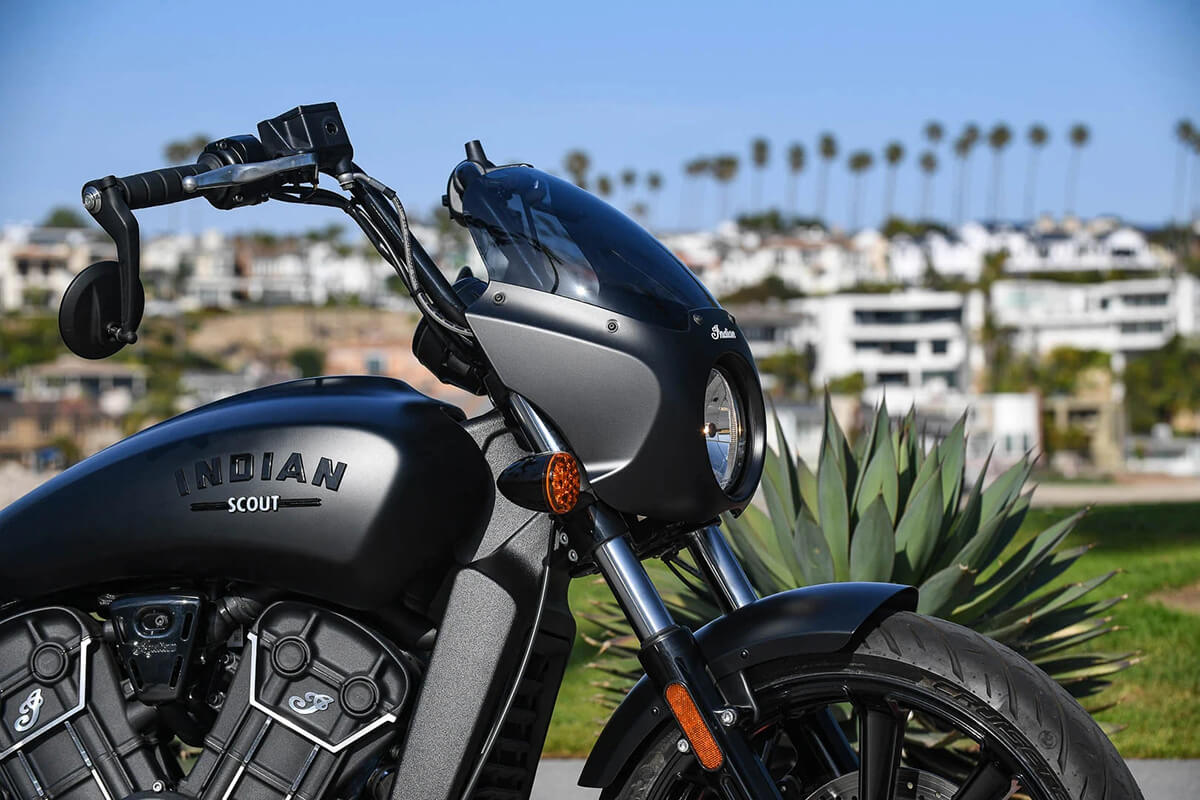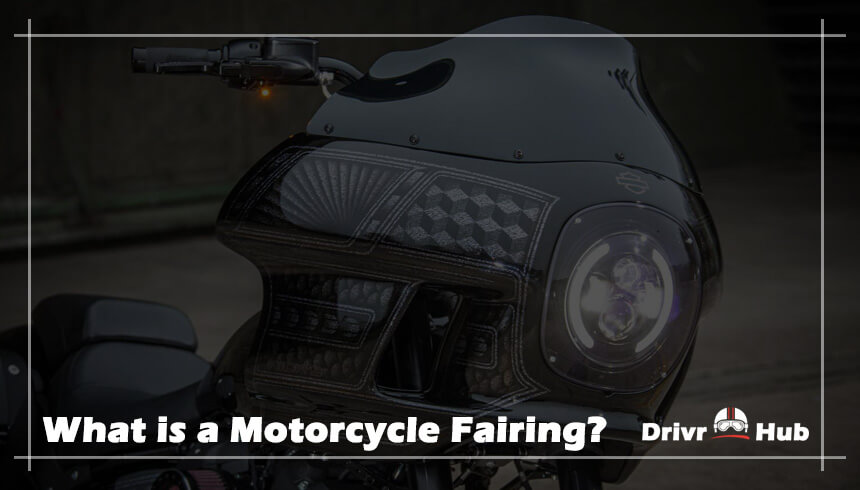What is a Motorcycle Fairing?
Motorcycle fairings are one of the most important and often overlooked pieces on a motorcycle. They play a huge role in the safety of the rider, as well as the aesthetics of the bike.
A motorcycle fairing is a type of aerodynamic bodywork that is designed to reduce wind resistance and increase the overall aerodynamics of a motorcycle. This type of bodywork is typically made from plastic or composite materials and is used to streamline the shape of the motorcycle, making it more aerodynamic and reducing the amount of wind resistance that the rider experiences while riding. In this guide, we will take a closer look at the benefits of motorcycle fairings, the different types of fairings available, and other considerations when choosing this product.
Most motorcyclists do not need to explain what a fairing is – everyone is familiar with the look of a motorcycle for road racing. However, today we will talk not about sports motorcycle, but road ones. If a fairing is installed on a racing motorcycle, it pursues one goal – to minimize the aerodynamic drag coefficient of the motorcycle with a rider for the sake of achieving the highest speed. Such a fairing, as a rule, is not suitable for road motorcycles, and not only because the rider takes a different, semi-reclining position.
The fact is that the motorcycle fairing, mounted on a motorcycle, should perform another important function – to protect the rider from the direct impact of oncoming airflow. It is known how not easy it is to ride a motorcycle without a fairing at high speed and in a strong headwind 70 km/h will seem very high – the muscles of your back and arms let you know about it very quickly. The fairing should relieve the driver from the need to squeeze the handles with a death grip, provide a free landing, which facilitates driving, reduce the risk of catching a cold.
Types of Fairing
As many manufacturers will offer bespoke fairing, the sky’s the limit when it comes to types and designs. Nevertheless, there are a few common types that most bikes tend to include:
-
Full fairing

Full fairings are motorcycle fairings that cover the entire front of the bike, including the handlebars, engine, and headlight. They provide the most wind protection for the rider and are often used on touring bikes and sport-touring bikes.
-
Half fairing

Half fairings are motorcycle fairings that cover half of the front of the bike, typically covering the upper part of the engine and extending down to cover the headlight. They provide more wind protection for the rider than quarter fairings, but still allow for a sporty look.
-
Quarter fairing

Quarter fairings are motorcycle fairings that cover only a quarter of the front of the bike, typically covering the upper part of the engine and the handlebars. They are often used on sportbikes and provide some wind protection for the rider while still allowing for a sporty, aerodynamic look.
-
Handlebar fairing

Handlebar fairings are motorcycle fairings that are mounted to the handlebars of a motorcycle, instead of the front of the bike. This can be useful for those riding with GPS or mobiles mounted onto the handlebars. They provide wind protection for the rider’s hands and can also improve aerodynamics.
Benefits of Motorcycle Fairings
There are a number of benefits to using a motorcycle fairing, including:
-
Increased aerodynamics: The most obvious benefit of a motorcycle fairing is the increase in aerodynamics that it provides. By streamlining the shape of the motorcycle, a fairing reduces the amount of wind resistance that the rider experiences, which can make for a more comfortable and enjoyable ride.
-
Improved fuel efficiency: Because a fairing reduces wind resistance, it also improves the fuel efficiency of the motorcycle. This can be especially beneficial for riders who are looking to save money on fuel costs or who are trying to reduce their environmental impact.
-
Reduced rider fatigue: Another benefit of a motorcycle fairing is that it can help to reduce rider fatigue. By reducing the amount of wind resistance that the rider experiences, a fairing can make for a more comfortable and less tiring ride.
-
Enhanced aesthetic appearance: A fairing can also enhance the aesthetic appearance of a motorcycle, giving it a more streamlined and sporty look.
Considerations when Choosing a Fairing
When choosing a motorcycle fairing, there are a number of other considerations that you should keep in mind, including:
-
Compatibility: Before choosing a fairing, it is important to make sure that it is compatible with your motorcycle. Some fairings are designed specifically for certain makes and models of motorcycles, while others are more universal.
-
Materials: Motorcycle fairings are typically made from plastic or composite materials. Plastic fairings are typically less expensive, but may not be as durable as composite fairings.
-
Installation: Some motorcycle fairings are easy to install, while others may require more advanced mechanical knowledge. It is important to choose a fairing that you feel comfortable installing or are willing to pay someone to do it.
-
Cost: The cost of a motorcycle fairing can vary widely depending on the type, materials, and brand. It’s important to set a budget and choose a fairing that fits within it.
How do I know if a motorcycle fairing is compatible with my bike?
The best way to determine if a motorcycle fairing is compatible with your bike is to check the manufacturer's website or contact the manufacturer directly. They should be able to tell you if the fairing is compatible with your specific make and model of motorcycle.
Will a motorcycle fairing increase my top speed?
A motorcycle fairing can improve the aerodynamics of your bike, which may reduce wind resistance and help to increase your top speed. However, it is important to note that the increase in top speed will depend on the specific fairing that you choose and the aerodynamics of your motorcycle.
How do I install a motorcycle fairing?
The installation process for a motorcycle fairing will vary depending on the specific fairing that you choose. Some fairings are easy to install and can be done with basic mechanical knowledge, while others may require more advanced mechanical knowledge. It is important to check the manufacturer's instructions and make sure that you feel comfortable with the installation process before purchasing a fairing.
Can I paint my motorcycle fairing?
Yes, you can paint your motorcycle fairing. However, it is important to use the right type of paint and primer to ensure that the paint adheres properly to the plastic or composite materials used in the fairing. It's also important to follow the manufacturer's instructions when painting your fairing.
sources:
Conclusion
A motorcycle fairing can be a great addition to any motorcycle, providing a number of benefits including increased aerodynamics, improved fuel efficiency, reduced rider fatigue, and enhanced aesthetic appearance. However, it is important to choose the right type of fairing for your specific needs, as well as considering compatibility, materials, installation, and cost. With the right fairing, you can enhance your riding experience and make your motorcycle look and feel even better.

